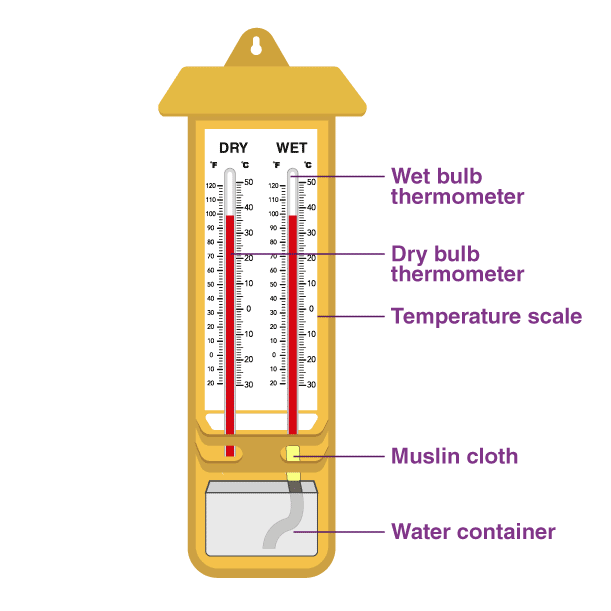Top 8 Ship Meteorological Instruments
Table of contents
1:- What are Meteorological Instruments?
Meteorological instruments are tools and devices used to measure and record various atmospheric parameters essential for understanding and predicting weather and climate conditions.
These instruments provide data on temperature, humidity, wind speed and direction, atmospheric pressure, precipitation, solar radiation, and other weather-related phenomena. Below are some commonly used meteorological instruments:
- Thermometer: Measures temperature.
- Anemometer: Measures wind speed.
- Barometer: Measures atmospheric pressure.
- Hygrometer: Measures humidity.
- Wind Vane: Indicates wind direction.
- Barograph: Continuously records atmospheric pressure over time, providing a historical record of pressure changes.
- Precipitation Sensors: Measure the amount and type of precipitation, including rain, snow, and hail.
- Psychrometer: Measures humidity using the difference between wet-bulb and dry-bulb thermometer readings.
2:- What is a Thermometer?

A thermometer measures temperature. It can be used to record air, water, or soil temperatures. There are various types of thermometers, including mercury, digital, and infrared thermometers, each suited for different applications.
2.1:- Types of Thermometer
- Mercury Thermometer
- Alcohol Thermometer
- Digital Thermometer
- Infrared Thermometer
- Bimetallic Strip Thermometer
- Thermocouple
- Resistance Temperature Detector (RTD)
- Thermistor
- Liquid Crystal Thermometer
- Galileo Thermometer
- Gas Thermometer
- Clinical Thermometer
3:- What is Anemometer?

An anemometer measures wind speed. It’s commonly used in meteorology and aerodynamics. Several types of anemometers, including cup, vane, and hot-wire, each provide valuable data on wind velocity.
3.1:- Working Principle of Anemometer
| Type of Anemometer | Principle | Operation |
| Cup Anemometer | Consists of cups mounted on horizontal arms. | The wind fills the cups, causing rotation. The speed of rotation is proportional to wind speed. |
| Vane Anemometer | Combines wind speed and direction measurement. | A rotating vane aligns with wind direction, and cups or blades measure wind speed. |
| Hot-Wire Anemometer | Uses a thin wire heated by an electric current. | Airflow cools the wire, changing its electrical resistance. This change is used to determine wind speed. |
| Ultrasonic Anemometer | Uses ultrasonic sound waves. | Measures the time for ultrasonic pulses to travel between transducers. Time changes with wind speed. |
| Laser Doppler Anemometer | Uses laser beams to measure wind speed. | Detects frequency shifts in reflected laser light caused by moving particles, calculating wind speed. |
4:- What is a Barometer?
A barometer measures atmospheric pressure. This instrument helps forecast the weather by detecting pressure changes. There are mercury barometers, aneroid barometers, and digital barometers, each offering precise pressure readings.
4.1:- Working Principle of the Mercury Barometer
Principle: A mercury barometer uses a column of mercury inside a glass tube to measure atmospheric pressure.
The glass tube is filled with mercury and then inverted into a dish of mercury. The atmospheric pressure pushes down on the mercury in the dish, causing the mercury in the tube to rise or fall. The height of the mercury column in the tube shows the atmospheric pressure: a higher column means higher pressure and a lower column means lower pressure.
5:- What is a Hygrometer?

A hygrometer is an instrument used to measure the humidity or moisture content in the air. It provides data on the relative humidity, which is the amount of water vapor present in the air compared to the maximum amount the air can hold at a given temperature.
A hygrometer is essential for understanding weather conditions, as humidity affects temperature and precipitation. There are various types, including mechanical hygrometers and digital hygrometers.
6:- What is a Wind Vane?

A wind vane, or weather vane, shows the direction of the wind. It is typically mounted on top of buildings and used in conjunction with anemometers to provide a complete picture of wind conditions.
7:- What is a Barograph?
- A barograph is an instrument that continuously records atmospheric pressure over time. It works by measuring the pressure with a barometer and then using a recording mechanism, typically a pen or ink system, to create a graph on a rotating drum or paper chart.
- This graphical representation shows how atmospheric pressure changes throughout the day.
- The barograph provides a detailed and continuous record of pressure variations, which is valuable for analyzing weather patterns and trends.
8:- What is a Psychrometer?

- A psychrometer measures humidity using two thermometers: one with a wet bulb and one with a dry bulb.
- The difference in temperature readings between the two thermometers indicates the humidity level in the air, providing an accurate measure of moisture content.
9:- Conclusion
- Meteorological instruments are essential tools for measuring and understanding atmospheric conditions, which are crucial for accurate weather forecasting and climate studies.
- From thermometers that gauge temperature to anemometers that measure wind speed, each instrument provides specific data necessary for a comprehensive view of the weather. Barometers and barographs track atmospheric pressure, while hygrometers and psychrometers measure humidity.
- Collectively, these instruments play a pivotal role in meteorology, enabling precise weather predictions and aiding in various scientific and practical applications.
Disclaimer :- The opinions expressed in this article belong solely to the author and may not necessarily reflect those of Merchant Navy Decoded. We cannot guarantee the accuracy of the information provided and disclaim any responsibility for it. Data and visuals used are sourced from publicly available information and may not be authenticated by any regulatory body. Reviews and comments appearing on our blogs represent the opinions of individuals and do not necessarily reflect the views of Merchant Navy Decoded. We are not responsible for any loss or damage resulting from reliance on these reviews or comments.
Reproduction, copying, sharing, or use of the article or images in any form is strictly prohibited without prior permission from both the author and Merchant Navy Decoded.


